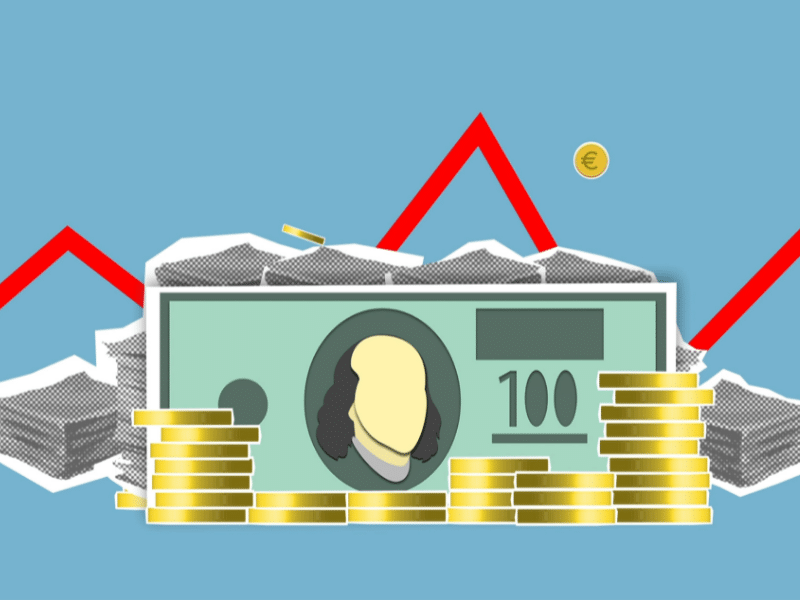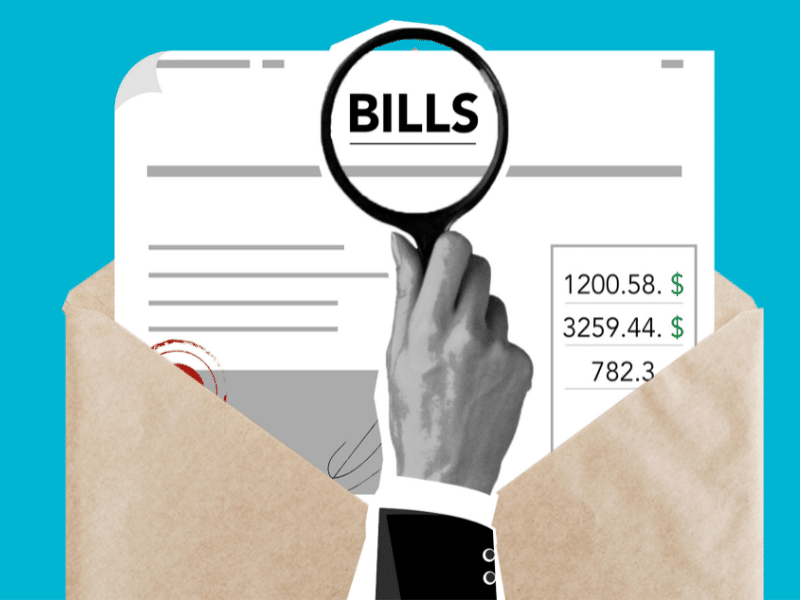Have you been having trouble managing your expenses? You may have been trying to reduce expenses as much as possible, but you may not have any idea on what to do with the extra money. This causes some people to ditch their budgeting system.
Perhaps you just have to become more deliberate than before with personal finance. If that’s the case, then a zero-based budget may help you. It makes sure every dollar you have every month has a purpose and nothing goes to waste.
Let’s start by talking about the principles behind zero-based budgeting and how you can apply this system. We will also go through the upsides and downsides of this personal finance method. Later, you’ll see how businesses can also use this strategy.
How does the zero-based budgeting process work?

You might have felt nervous after seeing the term. Does this mean you should splurge every month until you have no money left? The “zero-base” doesn’t work this way.
A zero-based budget plan makes sure that you specify how you’ll spend your money every month. Of course, you have to make sure you allocate funds to something productive.
For example, you might want to put your extra money into an emergency fund. If not, you might use it to save for a vacation this year. Here’s how you can build a zero-based budget:
- Write down your monthly income.
- List your expenses.
- Make sure your income minus expenses is equal to zero.
- Monitor your monthly expenses.
#1. Write down your monthly income.

Zero-based budgeting starts by finding out how much money you can work with every month. This is your monthly salary minus taxes, also known as your take-home pay.
If you have side gigs, add them to the monthly total. You can keep track of all this information by writing them down on a piece of paper. You may also install one of the many budgeting apps for smartphones.
You may also want to try using Microsoft Excel. Its spreadsheets can make it easier for you to list your income. Even better, it can quickly compute all that data. You could select the preset formulas or even write ones yourself.
What if I have an irregular income?
Nowadays, more and more people around the world prefer remote work. They are beginning to see the benefits of being free to do their work in any location they want.
However, most remote jobs involve freelance work that doesn’t usually have a fixed income. In other words, it can be difficult to be sure how much you’ll earn every month.
This can make zero-based budgeting a bit tricky. If you’re a freelancer, you might want to start by looking at your past monthly earnings. Set the lowest amount as your budget line.
Of course, even this can change, especially if you start earning more. Once you do, feel free to raise the budget line. Just make sure you’re still the minimum of your increased monthly earnings.
Read More: How To Save Money Fast
#2. List your expenses.
After taking note of the money going into your wallet, it’s time to check the funds going out. List the stuff you spend on every month.
Here are the common monthly expenses:
- Food
- Utilities such as electricity and water
- Property taxes
- Mortgage payments
- Rental payments
- Gas for your car
- Savings
- The stuff you pay for fun, such as restaurant dining or online video streaming
It would be best if you leave around $100 as miscellaneous spending. Life is unpredictable, so there’s no way you can always just spend on the same things every month.
In other words, the “zero-based” term is just a guideline. It should remind you that your money should have a purpose, but it isn’t practical to make your budget this rigid.
Leaving some legroom for your expenses helps you make a realistic zero-based budget. Otherwise, you might be caught off-guard with unexpected expenses.
#3. Make sure your income minus expenses is equal to zero.

Subtract your monthly expenses with your take-home to see how much is left. If you don’t see any money left over, don’t worry. That’s the case for most people due to the rising cost of living.
This is when you should look at your current expenses. Separate the stuff you need and the ones you don’t. Perhaps you have a gym membership or other subscriptions you’re not using.
Then, see if you can remove some of them. For example, you might want to just pay for Netflix and quit your Amazon Prime membership.
If not, try to find more affordable alternatives to those unnecessary expenses. If you have a gym subscription you’re not using, you might want to ditch that and do your workouts at home instead.
This should help you come closer to that zero-based budget. If you already have money left over each month, find a purpose for that money such as an emergency fund.
That’s the most common option, but you have alternatives. For example, you might want to try to use that money for dollar-cost averaging. It’s an investment method that allocates a portion of the monthly salary for certain assets.
#4. Monitor your monthly expenses.
Zero-based budgeting requires your constant attention. You can easily miss your goal if you don’t. Keep track of every amount of money that goes in and out of your wallet.
Account for each one in separate categories. For example, add the $100 you earned from your side hustle to your monthly income. Reduce costs for housing when you pay the mortgage.
This is how you can use zero-based budgeting to your advantage. This makes sure every dollar always works for you.
Why should I try this budgeting method?

If you’ve been feeling aloof with personal finance management, zero-based budgeting may help you focus. As previously mentioned, this makes sure that you direct every dollar you spend.
You don’t just reduce expenses and save money then hope for the best. Instead, you remind yourself every month that you’re keeping this behavior because of your purpose.
That can feel empowering, so you may persist with your positive money habits until you reach your goals.
Tips before trying a zero-based budget
Search for budgeting methods online, and zero-based budgeting is just one of the choices. There are so many out there because people have different needs and behaviors.
There is no such thing as the end-all-be-all of budgeting strategies. Instead, people should find the ones that have the benefits they want and the risks they can bear.
If you’re planning to use zero-based budgeting, make sure you’re willing to pay attention to your spending 24/7. You may find it hard to get used to this habit.
Some apps can help you, though. For example, your bank’s mobile app could send a notification whenever you spend with your card. You may find it more convenient to take note of your expenses with a budgeting app.
How this method can reduce cost savings
Most websites teach zero-based budgeting as a personal finance technique, but its roots came from an employee from a semiconductor company.
In 1969, Peter A. Pyhrr invented the concept while he was the account manager at Texas Instruments. Later, he wrote a book about it and released it in 1977.
The US government even applied it in 1973. Former US president Jimmy Carter was the Governor of Georgia back then. He adopted the zero-based budgeting system to prepare the fiscal budget.
If you have a business, then you may want to apply this. Zero-based budgeting can provide similar benefits to a company because it could make sure your yearly budget is efficient.
Apply zero-based budgeting to your business with the following steps:
- Start by budgeting with zero balance.
- Specify a goal for zero-based budgeting.
- Look over your business activities.
- Analyze the budget components to determine if your expenses are relevant, you’re reducing costs enough, and your scope for saving.
- Look over the activities that need cost reduction first.
- Set a final budget plan.
- Write a report and assign roles to the relevant individuals and departments.
Zero-Based Budgeting vs. Traditional Budgeting

Most businesses set a budget by looking at the previous year’s earnings and expenses. This makes writing a budget plan much easier, but the company may miss out on ways to maximize earnings and minimize spending.
This is because it assumes that last year will just be the same as this year. However, so many unexpected things can happen, whether for people or corporations.
The coronavirus pandemic is an extreme yet real example of how unpredictable life can be. Those that followed traditional budgeting are likely the ones that suffered the most from this global event.
Previous budgets were drastically different from the one for the pandemic. At the time of writing, the COVID-19 crisis, and the Ukraine-Russia conflict are still ongoing.
This is when businesses may want to try the zero-based budgeting strategy. Its flexibility may help in adjusting to the uncertainty ahead.
Are there any downsides for businesses using ZBB?
Zero-based budgeting isn’t always great for companies. This takes a lot of time and effort to pull off, so businesses may not have enough funds or employees for the job.
Also, this requires a lot of accounting expertise. Depending on the size of your company, you may need a few accountants who can keep track of all your expenses and earnings every month just for this method.
This issue becomes worse for larger companies with multiple departments. You will have to find a way to make sense of all their financial activities for zero-based budgeting.
If you don’t account for sudden expenses, your company may have trouble managing it. However, some firms may not be able to add this to their financial plans.
Related Articles
Final thoughts
Zero-based budgeting makes sure that your money works for you. Every dollar goes to a specific purpose, so you end up with a “zero-base” every month.
However, it’s not the only way you can plan a budget. For example, the 50/30/20 plan allocates half of your take-home pay for necessities, 20% for savings and debt, and 30% for stuff you like.
If you need more assistance, it’s best to consult a financial advisor. For more money-saving tips, read more articles from Financial Daily Updates.












